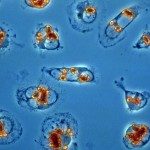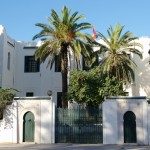Présentation
This PTR aims to gain novel insight into the nature, the expression, and the regulation of Leishmania virulence factors through the investigation of genetics, transcriptomics, and proteomics differences between (i) virulent and avirulent L. donovani laboratory strains, and (ii) hyper- and hypo-pathogenic L. major field isolates using next generation sequencing and quantitative LC-MS/MS technologies. Together these approaches allow a first systems-wide analysis of molecular mechanisms that govern Leishmania survival within its target host cell, which may find important application for the design of novel anti-parasitic intervention strategies.
Objective 1: To use a deep sequencing approach to reveal the genetic basis of differences in pathogenicity of L. donovani lab strains and L. major field isolates
Units 1, 2, and 3 will carry out a genomic comparison of axenic and animal-derived amastigotes of L. donovani strain LD1S, and hypo- and hyper-virulent L. major field isolates collected from Tunisian patients. We will apply next generation sequencing (NGS) technology using the Illumina HISeq2000 in order to reveal the genetic basis of virulence attenuation in cultured and patient-isolated parasite. This analysis will reveal gene rearrangements and amplifications that correlate with Leishmania infectivity, which may find future application for the development of novel diagnostic tools for the classification of field isolates.
Objective 2: To perform a comparative transcriptomics analysis of these parasites using the HiSeq2000 RNAseq technology to correlate transcript abundance with diseased outcome
Units 1, 2, and 3 will use high-throughput transcriptome analysis (RNA-seq) based on quantitative next-generation sequencing (NGS) technologies, with the aim to compare the transcript profiles of hyper-/hypo-pathogenic Leishmania strains. Mapping of reads to the L. donovani and L. major reference genomes will help to define (i) the density of reads associated to any open reading frame (ORF), (ii) transcripts generated by alternative trans-splicing events, (iii) the map of initiation sites of parasite-specific poly-cistronic transcription, and (iv) sense and antisense transcript abundance [3]. This analysis will allow revealing transcripts that are exclusively expressed in virulent Leishmania, and will thus allow important new insight into Leishmania pathogenicity mechanisms.
Objective 3: To develop and apply quantitative LC-MS/MS analyses of biosynthetically labelled parasite extracts (SILAC) in order to identify proteins and phosphorylation events associated with Leishmania virulence
Units 2, 3 and 4 will use biosynthetically labelled L. donovani cell extracts (SILAC) in combination with phosphopeptide enrichment and high-performance mass spectrometry analysis to reveal proteins, enzymatic pathways, and phosphorylation events that are unique to infectious parasites and thus relevant for intracellular survival.
Objective 4: To integrate the genetics, transcriptomics, and proteomics datasets by systems biology approaches with the aim to uncover regulatory mechanisms underlying Leishmania virulence
Unit 3 will integrate the resulting large-scale datasets on the genomic, transcriptomic, and proteomic levels with molecular interaction data using the Cytoscape analysis platform. Specifically, we will (i) integrate the resulting networks with the different datasets in Cytoscape, (ii) map genes, transcripts, and proteins to pathways, (iii) perform statistical analysis of under- and over-expression on network regions and pathways to highlight the most significant observed global changes between virulent and avirulent strains. If needed, statistical analysis approaches and other computational tools will be created as Cytoscape plug-ins.
Objective 5: To genetically assess putative virulence factors using transgenic approaches in combination with experimental infection models
Candidate virulence factors discovered by our systems-wide analyses will be genetically assessed by Units 1 and 2 for their virulence functions by (i) establishing transgenic parasites that over-express virulence genes in avirulent parasites and (ii) establishing knock out parasites deleting the corresponding gene in virulent parasites using methods of homologous recombination [13]. Respective gain and loss of virulence in these derivatives will be studied in macrophage infection experiments [14].
Coordinator
- Fatma Guerfali, Ph.D., Chargé de Recherche, Institut Pasteur de Tunis
Partners
- Dr. Gerald Spaeth, Chef de laboratoire, head of G5 Virulence Parasitaire, Institut Pasteur, Paris
- Dr. Benno Schwikowski, Chef de laboratoire, head of Systems Biology lab, Institut Pasteur, Paris
- Abdelkader Namane, Engineer, Head of Proteomics Platform, Institut Pasteur, Paris








